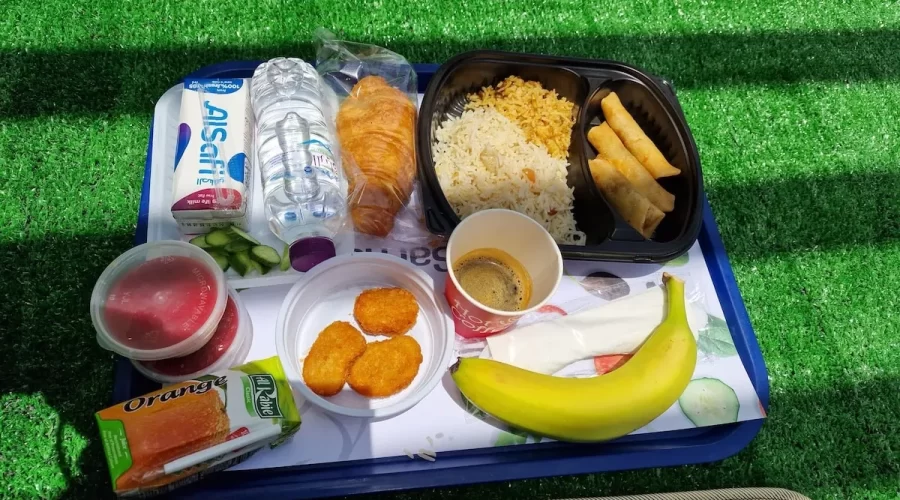Hajj Food Guide 2025: Food to seek and food to skip
Dhul Hijjah, the twelfth and final month of the Islamic calendar, began this year on the evening of Sunday, May 25, 2025, with Monday, May 26 marking the first day. These first ten days of Dhul Hijjah are among the most spiritually significant in Islam, culminating in the rites of Hajj and the celebration of Eid al-Adha. For millions of Muslims who are now preparing or already en route to Makkah, this is a journey of deep devotion—and one where physical energy plays an essential role in enabling spiritual endurance.

One often overlooked but essential aspect of the pilgrimage is the food. During Hajj, food isn’t just sustenance—it becomes a logistical challenge, a matter of hygiene, and sometimes even a test of patience. Fortunately, the Saudi government, along with various Hajj agencies around the world, have made significant strides in improving the food services provided to pilgrims. Meals are typically pre-cooked, packaged, and distributed at specific times to accommodate the flow of the rituals. The Ministry of Hajj and Umrah has overseen initiatives to enhance food hygiene, offering vacuum-sealed trays that often include staples like chicken or lamb kabsa, vegetable rice, Arabic bread, yogurt, dates, and fresh fruit. Hydration is emphasized, with water bottles and laban (a yogurt drink) distributed regularly, especially during high-demand days like Arafah and Muzdalifah.
Many countries manage their own food operations through national Hajj agencies. For example, the Pakistan Hajj Mission has set strict guidelines for caterers, requiring the use of fresh ingredients and culturally appropriate meals like chicken pulao, lentils, and roti. In 2024, they took disciplinary action against several contractors who failed to meet hygiene or taste standards, and 2025 sees even tighter enforcement. The National Hajj Commission of Nigeria (NAHCON) offers localized cuisine for Nigerian pilgrims, typically jollof rice, soups with tuwo or semolina, and fruit, though some past complaints have prompted changes to avoid overly sweet or overly oily options.
Private and luxury Hajj packages—like those from Al Bait Guests, Dar El Salam, or Al Khalid Tours—offer more varied experiences. During the main Hajj days in Mina and Arafah, the menus are simpler but still curated for quality and taste. Some operators also provide packed snacks, fruit baskets, or even midnight refreshments post-Isha or after Tahajjud.
For South Asian pilgrims, agencies like Omni Hajj Meals based in India offer custom delivery of region-specific dishes like dosas, idli, biryani, and buttermilk—bringing a sense of home comfort that can help with digestion and appetite.
That said, not all meals are ideal. Pilgrims are advised to avoid heavy fried foods, especially from roadside vendors, as they can lead to dehydration or indigestion in the extreme Saudi heat. Unsealed drinks or cut fruit sold on the street should also be approached with caution due to potential water contamination. Overly salty or sweet meals—such as syrup-drenched desserts or canned fruit juices—should be limited, as they can lead to thirst, fatigue, or worse, heat exhaustion.
Balancing food intake with worship is critical. It’s best to eat lightly before intense rituals like Tawaf or the walk between Safa and Marwa. Focus on protein-rich, easily digestible meals in the early morning or after Maghrib. Carry high-energy, portable snacks like dates, protein bars, and sealed nuts to avoid long waits in food lines. Hydration is key—pilgrims should aim to drink at least two to three liters of water daily. Plan your meals around prayer times, allowing you to focus fully on your acts of worship without the distraction of hunger or discomfort.
What should you avoid?
- Heavy fried fast-food (queues are enormous and the oil dehydrates you).
- Over-salted or very sweet dishes, such as syrup-laden desserts or ultra-sweet pap, which trigger thirst and, for some, ulcers. Tribune Online
- Raw salads or cut fruit from street stalls whose washing water you can’t confirm.
- Unsealed drinks—always break the tamper ring yourself.
- Big caffeine hits right before long periods without toilets (Jamarāt or Tawāf).
What you may expect from Saudi Government & Official Agencies,
Catering Upgrades: In recent years, Saudi authorities have introduced pre-packaged, heat-sealed meals during high-traffic days like Arafah and Muzdalifah to ensure safety and convenience.
Menu Variety: Meals often include rice dishes like kabsa, grilled chicken, yogurt, dates, fruit, bread, and water.
Quality & Hygiene: The Saudi Ministry of Hajj and Umrah ensures strict hygiene standards. Most pilgrims report meals are clean, fresh, and nutritionally balanced.
Ultimately, food during Hajj is not just a physical need—it’s part of your ibadah. Eating with the intention of maintaining energy for the sake of fulfilling your religious duties transforms every bite into a form of worship. The simplicity of Hajj food is a reminder that this journey strips us of excess and recenters our lives on what matters most: submission, sincerity, and remembrance of Allah.
May your Hajj be accepted, your body nourished, and your spirit lifted. And for those still planning, may this guide help you prepare for the most important journey of your life.

